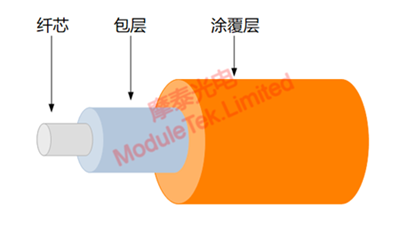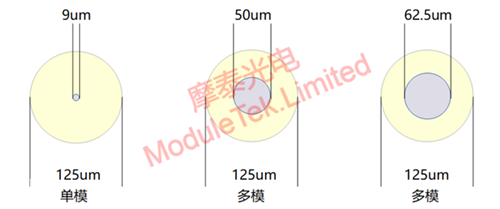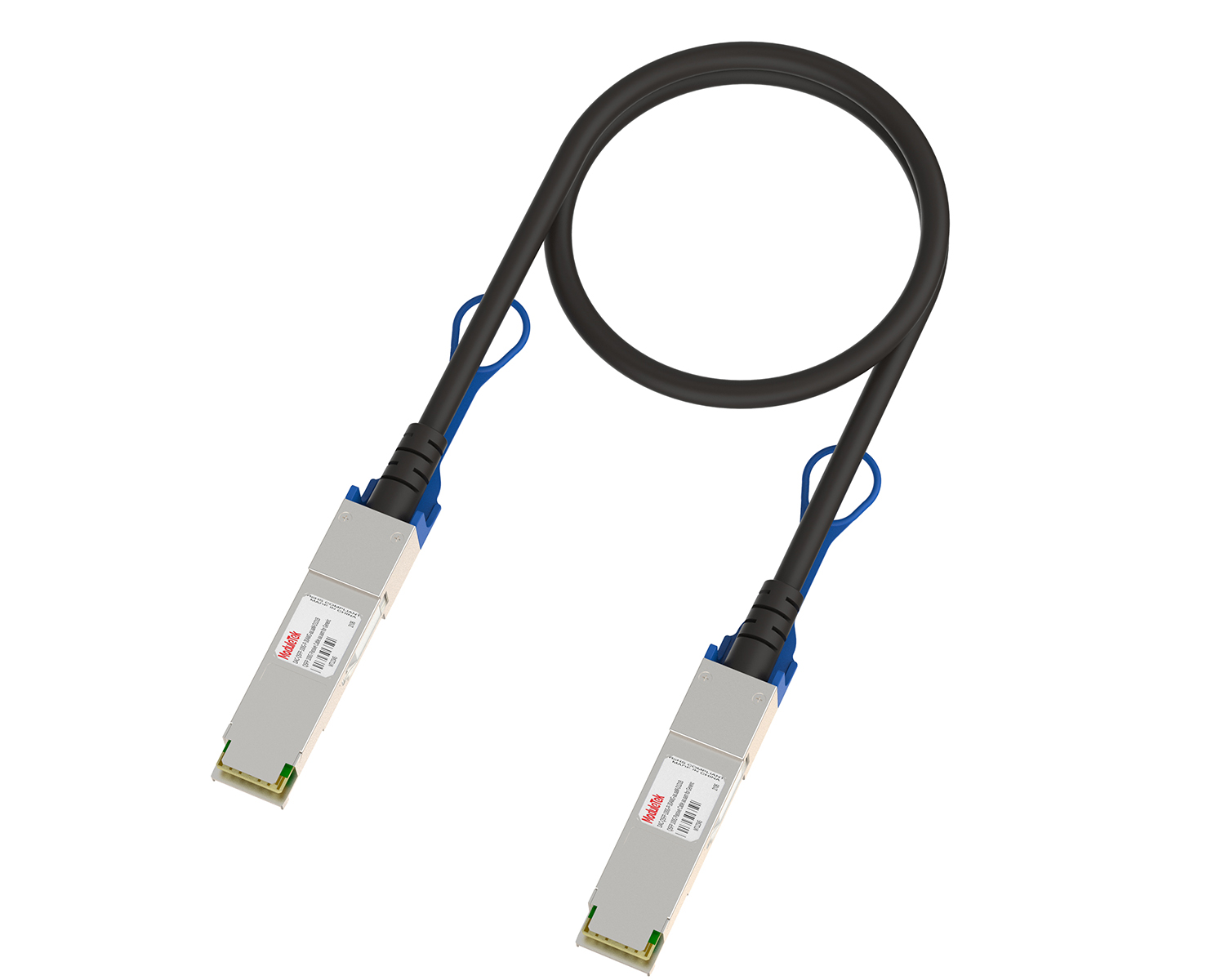An introduction to the differences between singlemode and multimode fiber optics
Time: 2023-12-07
Fiber optic as a network transmission medium, is widely used in network cabling, the actual use, will come into contact with single-mode and multi-mode optical fiber, many people do not understand the differences between the two, resulting in the use of mixed. The following is a brief introduction to the difference between single-mode fiber and multi-mode fiber.
1. Single-mode fiber and multi-mode fiber similarities
Single-mode fiber and multimode fiber structure is the same, are composed of three layers of transparent medium, from inside to outside, respectively, for the highest refractive index of the core, the lower refractive index of the cladding and the outside of the coating layer, due to the difference in the refractive index of the core and the cladding of the interface, which will produce a total reflection of the light, so that the light transmission in the core will not run to the outside. As shown in the figure below:

Figure 1 Structural section of optical fiber
2. The difference between single-mode fiber and multi-mode fiber
A. Different core diameters
Although the single-mode fiber and multimode fiber cladding diameter is the same, the diameter of the size of the 125μm, but the core diameter of the multimode fiber is much larger than the core diameter of the single-mode fiber, single-mode fiber core diameter is generally 9μm, while the core diameter of the multimode optical fiber is generally 50μm/62.5μm.

Figure 2 single-mode and multi-mode fiber core diameter difference comparison chart
B. Different working wavelengths
Single-mode fiber usually works in the 1310nm band and 1550nm band, while the multi-mode fiber works in the 850nm band.
C. Different attenuation and dispersion
Single-mode fiber attenuation is low, small dispersion, signal loss in the transmission process is small, not easy to distort. Multimode fiber attenuation is relatively high, dispersion is also more serious, limiting its transmission distance.
D. Different transmission distances
Single-mode fiber is suitable for long-distance transmission, usually used for 1KM-120KM transmission, while the dispersion of multi-mode fiber is serious, suitable for short-distance transmission, usually used for less than 1KM transmission.
E. Different sheath colors
Sheath color can be used to distinguish between single-mode fiber optic patch cords and multimode fiber optic patch cords, single-mode fibers with yellow outer sheath, multimode fibers according to the type of different types of sheaths, there are a variety of colors, OM1/OM2 multimode fibers with orange sheath, OM3 multimode fibers with lake blue sheath, OM4 multimode fibers with lake blue/purple sheath, OM5 multimode fibers with aqua green sheath.

Figure 3 Comparison of singlemode and multimode sheath colors
3. Comparison of advantages and disadvantages
A. Advantages and disadvantages of single-mode fibe
Advantages of single-mode fiber: single-mode fiber attenuation and dispersion is small, the bandwidth is higher, suitable for large-capacity, long-distance communication.
Disadvantages of single-mode fiber: single-mode fiber is sensitive to pollution, requires high-precision connectors, and the light source process is complex, therefore, its installation and equipment costs are high.
B. Advantages and disadvantages of multi-mode fiber
Advantages of multimode fiber : multimode fiber core diameter, insensitive to pollution, simple connection, low cost of light source and equipment.
Disadvantages of multimode fiber : multimode fiber attenuation and dispersion, can only be used in short-distance communication.
If you have any questions about the above content, you can contact us by Email :web@moduletek.com

 40G/100G Optical Transceivers
40G/100G Optical Transceivers 10G/25G Optical Transceivers
10G/25G Optical Transceivers 155M/622M/2.5G Optical Transceivers
155M/622M/2.5G Optical Transceivers 100M/1G Optical Transceivers
100M/1G Optical Transceivers FC 16G/32G Optical Transceivers
FC 16G/32G Optical Transceivers CWDM/DWDM Optical Transceivers
CWDM/DWDM Optical Transceivers 100M/1G/10G Coppers
100M/1G/10G Coppers Active Cable AOC
Active Cable AOC Direct Attach Cable DAC
Direct Attach Cable DAC Regular/MTP-MPO Fiber Patch Cords
Regular/MTP-MPO Fiber Patch Cords MT2011
MT2011 MT2010
MT2010 CodingBox
CodingBox






